
ADVENDURE is the leading web portal in Greece about Mountain Running, Adventure, Endurance and other Mountain Sports
info@advendure.com
During these days, the worldwide mountain running community, thanks to the evolution of digital technology, has lived up closely the successful attempt of breaking the record of the Great Himalaya Trail (GHT) in Nepal, by the South African athletes Ryan Sandes and Ryno Griesel. Ryan and Ryno, a strong, homogeneous and determined couple of athletes, managed to overcome all the obstacles they found in the Himalayas – obstacles that were many and sometimes very big - and return to their homeland with a new GHT record performance (25 days, 04 hours and 24 min). Their epic adventure has positively revived the debate on FKTs and their prospects for the future. Advendure contacted Ryno and Ryan to try to shed more light on their effort, but also to listen to their own perspective about their experience in Nepal and their viewpoint about FKTs.
Ryan and Ryno, the eyes of the global trail running community have been upon you recently. You attempted an epic crossing in Nepal which, besides its 25-day length, has left a sense of greatness and majesty to all those of us who followed your daily reports from the trail. It was a grand battle against the limitations of being human, and at a certain point it actually became a battle for survival for one of you. It was an adventure that inspired many people, and will certainly encourage some to test their own limits on your route. Above all, it was clearly an internal battle, with your own mental and psychological resilience. Your fight against time and your own limitations, and Ryno's superhuman effort to overcome his health problems, truly amazed us all. Allow me to take the opportunity of our communication to convey the congratulations of the Greek community as a whole, and of all of us here at Advendure.
We are greatly honoured that you would take the time to answer these questions, symbolically 25 of them, as many as the days you spent on the Nepalese trails; I know that now that the GHT crossing is over for you, you will be very busy and will also need to rest from this exhausting effort that drained your physical and mental resources. There has been much discussion, and there will surely be even more, about your GHT crossing, in a debate about FKTs that has been ongoing for a long time. I am certain that your answers will be particularly useful for all ultra-runners and adventure-lovers.
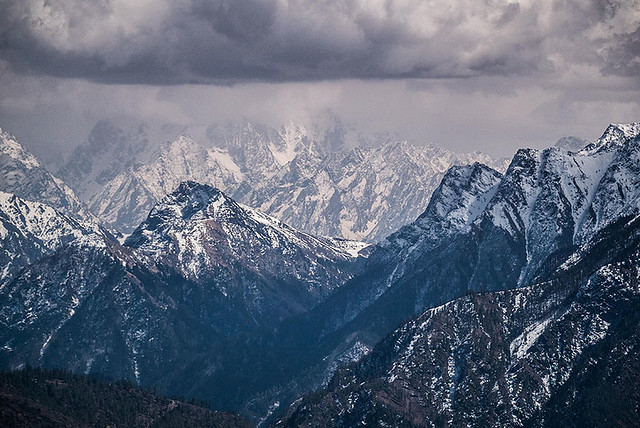
[Advendure]: When and how did you get the idea of doing the GHT? Were you inspired by the history of mountaineering in the Himalayas in general? Did you read about the Crane brothers (1983) and the Poirier-Bonneau duo (1994), both attempts that made history in their own time? Was the GHT a sentimental choice? Was it your friendship that led you to attempt the GHT together, or was it a way of ensuring that your plan would have better chances of success?
[Ryno Griesel]: Not sure exactly when and where we decided finally. Ryan and I both love and respect big mountains and it was a concept that developed (as a natural progression to our Drakensberg Traverse FKT (210km, South Africa, 2014) – over many banters in local mountains together. Our team selection was purely based on our friendship and mutual goals.
[Ryan Sandes]: Well, I guess after Ryno and I did the Drakensberg traverse, naturally we were looking for another project and it has always been a dream of mine. I always wanted to do the GHT and Ryno was super keen and I think since he went there as a student climbing he always wanted to go back, so I guess it was about six years ago that we kind of decided we wanted to do it but I always knew it would take a lot out of us with me being a professional athlete I was worried that it would affect my racing but I think last year after winning Western States, which was a massive goal race for me, I really felt that the time was right to do an epic adventure and for me this has been like the greatest adventure and probably the pinnacle of the adventures I’ll do, so I guess that is where it came from. For me the GHT is just the most out there, craziest and like mythical long distance trail I’d love to do, and I’m really stoked that we managed to do, to pull it off and finish it together.
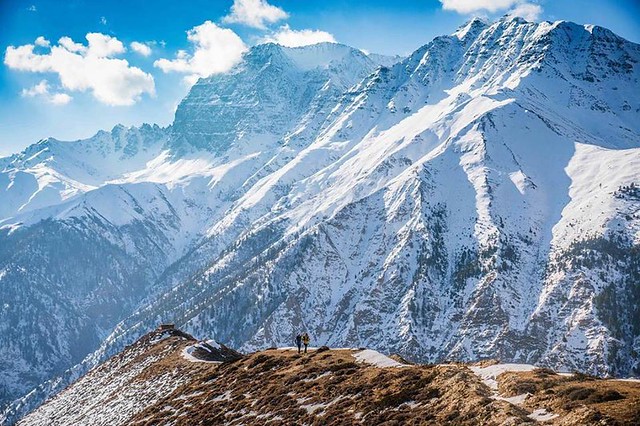
[Advendure]: You knew that you started the crossing at a risky time, since the beginning of March is still winter in the west. You had to alter your route at Dolpa to avoid the snow-covered upper crossings, and had to risk your lives at several other points of the route. Was there a serious obstacle to starting a bit later, or was there something else in your plan?
[Ryno Griesel]: During our planning we did not expect the weather to be a concern as we would only hit the higher risk Dolpha area a few days later into our attempt. Nepal experienced an unusual late winter this year. We were however committed on our personal programs and decided to start and see how it went. It definitely brought a few extra challenges, but also a few great experiences and memories together. For a project of this scale one will never get all the planning right, and there comes a point you just have to commit and rely our your friendship together to find solutions on the go.
[Ryan Sandes]: I guess there are two weather windows, the first is March-April, then if you do it too late in the April monsoons have started, and the other period is October-November and I guess we just decided to do it then. Obviously there was a really late winter this year. Generally early March is normally fine but obviously it made it a little tricky. It kind of fitted in with the plan and also the rest of my season and other commitments , so I guess that was the reason of it.
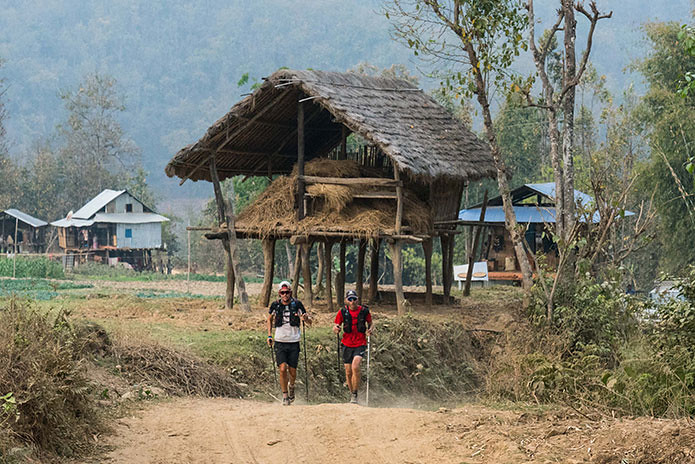
[Advendure]: I suppose you followed the hybrid route (a combination of upper and lower GHT) taken by Andrew Porter in 2016, which is less technical, less demanding of mountaineering skills, because it is more suitable to your trail running style; eventually, you followed your own route, however. Was this because the Porter route was the only point of reference that was comparable, making any attempt at breaking the record more meaningful?
[Ryno Griesel]: We followed Andrew’s route (he supplied 12 Check-points to visit to be considered a fair challenge) as at time of planning, it was the recognised FKT for the fastest crossing of Nepal in 28 days, 13 hours and 56 minutes. The international conversations regarding the technicality of the route vs. other options only really started after we embarked on our project. We are, in hindsight, very happy with Andrew’s FKT chosen, as it provided amazing variety of Nepal, which we really enjoyed.
[Ryan Sandes]: The route we chose was obviously based on Andrew Porter’s route because we wanted to have a benchmark to compare it to, and Andrew’s was the fastest crossing. And also being South African and knowing Andrew we had lot of access to chat and get all the details and info, so I guess that was the reason but also for me personally I love big mountains but I also love exploring the country, and being able to run across big mountains but then also combining that with passing through villages low down in the agricultural areas, I felt like I experienced the whole of Nepal and really got to meet the people and I feel I have crossed the country, whereas I think you just purely do the High Route then you’re pretty much in just big mountains and I feel like you miss out on the overall country, and like I said for me I love big mountains but that’s not the reason why I trail run. I love adventure and breaking it up and mixing it up a bit.

[Advendure]: Could you analyse your route for us, briefly, with some numerical data and perhaps some information that has now become crystallized after your adventure? Will you be presenting your data in the near future? Will we be able to see an outline of your route?
[Ryno Griesel]: The Great Himalaya Trail (GHT) of Nepal is not a single trail but rather a combination of various trails in either the upper (GHT High Route) or middle (GHT Cultural route) districts of Nepal stretching from the west to the east (or vice versa) end of the country. We finally traversed a 1504km route (with 70.000m of elevation gain and the same loss over the Nepal Himalaya Mountain range) with the various intentional route variations chosen combining the High (Upper) GHT and Cultural (Lower) GHT. We self-navigated in an attempt to find the best possible route to link up the 12 required checkpoints as set by Andrew Porter on October 2016 at his FKT (28d 13h 56m):
CP1: Start in the village of Hilsa on the Western Nepal/ Tibetan border
CP2: Simikot at roughly 77km
CP3: Gamgadhi at roughly 150km
CP4: Jumla at roughly 193km
CP5: Juphal (280km) or Dunai at roughly 290km
CP6: Chharka Bhot at roughly 380km
CP7: Kagbeni at roughly 444km
CP8: Thorang La Pass at roughly 463km
CP9: Larkye La Pass at roughly 561km
CP10: Jiri at roughly 928km
CP11: Tumlingtar at roughly 1075km
CP12: Finish on the Eastern Nepal/ Indian border at Pashupatinagar
The route taken is/was available on www.redbull.com/ght2018 throughout. The final GPS route is available for verification by the necessary authorities for FKT verification. We are not planning to release further route info.
[Ryan Sandes]: Ryno has got all the details on the route.

[Advendure]: Today, there are already several timed crossings of the GHT in Nepal, all made in the last decade. However, each one has its own features, with different combinations of the upper and lower route. The former is a mountaineering route, the latter is more of a hiking route. In fact, we are seeing a plurality of routes and results, arising from various combinations and various degrees of autonomy. Yet all of these attempts have one great element in common: their struggle against human limitations. Since there will be other athletes in the future, who will attempt to break the record, which do you think should be the route of reference? Does the Porter route fulfil the specifications of such a role?
[Ryno Griesel]: As mentioned, we really enjoyed Andrew Porter’s route. But we believe the beauty of the FKT movement is that is allows choice, timing and creativity – opening up multiple options for future challengers.
[Ryan Sandes]: I do think it’s important to define your route and I think that’s what Ryno and I tried to do, to speak to Andrew and get a fair comparison and then also set up a benchmark for people in future who want to follow our route, so they got the criteria and all the checkpoints and I think that makes it a fair challenge. Every FKT starts off with someone setting a benchmark and then having a fair set of criteria. I guess that we tried really hard to do but obviously as you mentioned there are a number of other routes and options, and people can follow them, but if people want to better our time, they have all the info.
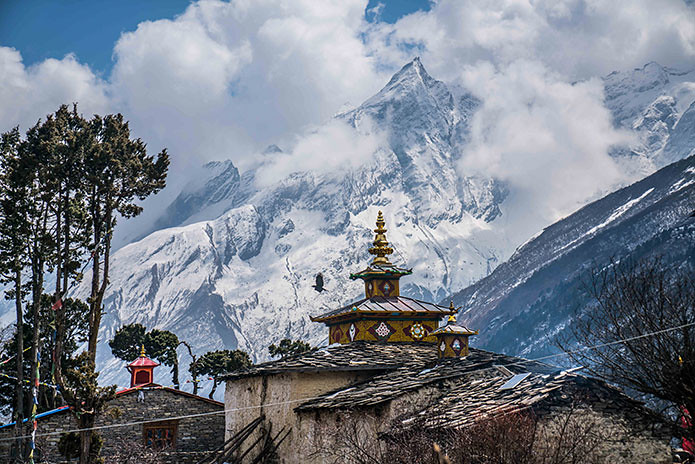
[Advendure]: How far are we, today, from seeing the GHT as a non-stop race for solo athletes or duos, with support structures such as yours? Naturally, the serious issues concerning permits and guides in Nepal will have to be resolved first!
[Ryno Griesel]: Not sure – but it sounds like a great idea. It is important to mention, that we did not have a support crew (only a film crew) and that we had the same level of “support” as Andrew (a local guiding company – Himalayan Trails) and each other.
[Ryan Sandes]: I guess you could definitely set something like that up; obviously it’s really big mountains so I would always be hesitant for saying like that, even with the Drakensberg traverse we did. I think it’s very unpredictable, and when you start trying to have a set race, set timings and stuff, you can run the risk of having to run a race in bad weather conditions that are not up to scratch. I think it might be a bit far off but you never know; the sport is progressing so quickly, you could definitely see something like that.

[Advendure]: What has changed inside you, after your GHT experience? Are you the same people as before, or did these 25 days carve two new personalities, who have revised their relationship with the sport as they knew it?
[Ryno Griesel]: I personally gained a lot more experience, confidence and even more passion for big mountains. I am looking forward to more future FKT projects in big mountains. Also having experienced these challenges together, strengthened our friendship.
[Ryan Sandes]: Definitely a lot has changed! I think the GHT had a massive impact on my life and shaped me going forward. I think I’ve learned so much, like having patience, and I have learned a lot from the local people, it’s really mind-blowing just to see how welcoming they were. They opened their homes to us, despite being complete strangers for them, they let us sleep in their beds. Otherwise we obviously had a lot of hardships and tough times along the way but all of that builds character and makes you stronger. For me personally appreciating the simple things in life, I think it’s really easy these days to chase big goals whereas for me doing the GHT made me realize that what really matters is appreciating the small things in life. It gives life so much more meaning, not always trying to chase big things.
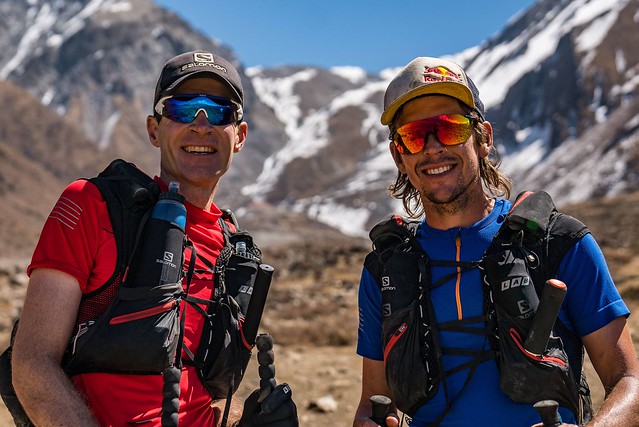
[Advendure]: I remember that, at Kagbeni, Ryno said that Ryan was his incentive to keep moving; a few days later, Ryan wrote that he would even go to war with Ryno by his side! When all is said and done, which is the greater incentive - the desire to complete the effort, or comradeship along the way? And is it powerful enough to overcome obstacles that might even be life-threatening?
[Ryno Griesel]: For sure, always friendship first, but with a common goal, we can achieve any goal and overcome obstacles along the way.
[Ryan Sandes]: Ryno and I have really formed a strong bond along the project, obviously there was a lot of ups and downs and that made the bond even stronger. As I said Ryno had numerous setbacks with the frostbite etc. and to see him keep on going and never give up, was really phenomenal, and like I said he would be one of the first people I’d pick if I went to war. I think what Ryno endured was pretty phenomenal.
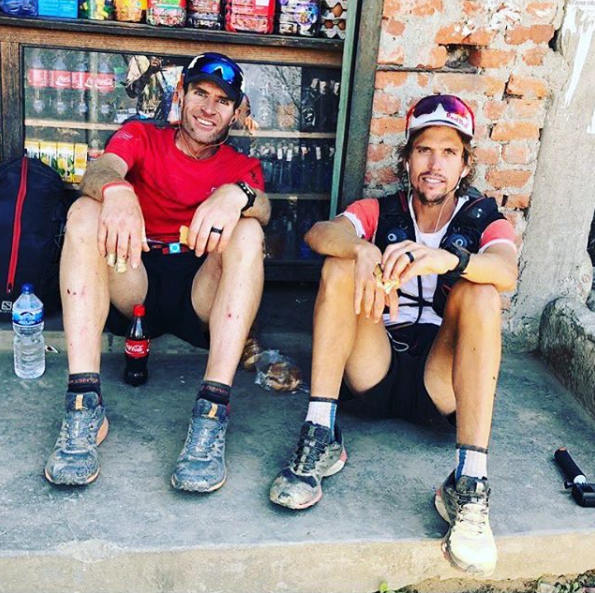
[Advendure]: Was it difficult to keep to the right route? Did you stray from the trail regularly? As you have said, maps are often inaccurate, and of course it can't have been easy to keep to a snow-covered track! Anyone who has been to the area knows about the problems with the maps, since the scales are rarely suitable for hikers, especially in the west! Did you rely on information from the locals?
[Ryno Griesel]: We did a lot of planning on the maps before-hand and built a very good GPS track of our intended route. This then only left micro-navigation during our run against this hand-rail. Especially in the west, the trails were often covered in snow and ice, which made navigation tricky, and we often needed to read the contours of the map to find alternative options. With the maps at a scale of 1:150 000, this regularly lead to tricky interpretation decisions. We did also ask the locals for confirmation directions, which was very helpful.
[Ryan Sandes]: The navigation was really tricky because a lot of the trail was covered in ice and snow. And also because the GHT in a whole network of trails and they are not marked like in Europe, which made it even trickier in parts but luckily for us Ryno is a phenomenal navigator so I think that really helped a lot and we didn’t run into any major troubles. We also did ask locals for info when we could, they were really helpful and friendly, if we were on the right path but obviously it’s quite tricky with the language barrier and without being sure that they always understand you it’s a little bit risky.
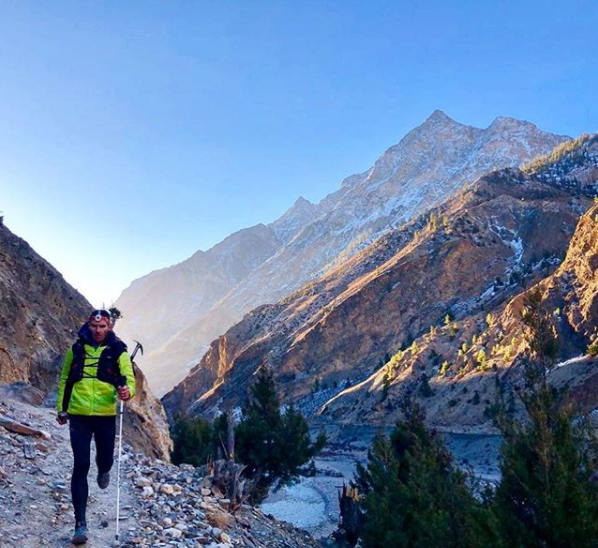
[Advendure]: I imagine that the toughest days were the ones between Dunai and Kagbeni. You were isolated, battling against the cold and ice. For me, those were epic days, despite the scarcity of information! Can you tell us a few things about those days?
[Ryno Griesel]: In addition to the weather being severe and the navigation tricky, we were the first people to cross this area since winter which lead us breaking snow and ice for extended distances. This lead to very slow and tiring movement whilst being exposed to the weather. We were also very isolated with almost nobody else in this section. The one night we managed to find shelter in a Monastery, and the other a Monk took us in. On both occasions we would have been in life threatening situations if they did not.
[Advendure]: To the west, the terrain is characterized by high altitudes, but also valleys that can be crossed lengthways. To the east, while the altitudes are lower, there are countless valleys cutting into the route, which means endless descents and ascents. Please tell us a few things about the terrain and the physical difficulties of the route.
[Ryno Griesel]: The whole route was challenging with each section bringing its own challenges. We faced more severe weather and bigger mountains in the west, but in the East, although generally more runnable, we would spend days going either straight up or down, with very little horizontal progression, which was mentally very challenging.
[Ryan Sandes]: In the west as you mentioned the valleys were crossed lengthways it made it a lot harder and I think it was quite frustrating to look at the profile and think that you just have one climb but then you have to dip up and down through all these valleys. Also in the west it’s a lot less touristy. The valleys are more technical, there were a lot of landslides and it was very technical and slow-moving because some of them were covered in ice and snow, so it made it quite challenging and a lot slower-moving than what we expected. You just want to force the pace and move faster but at the same time you are just using up so much energy without having any result. That was a real challenge in the west.
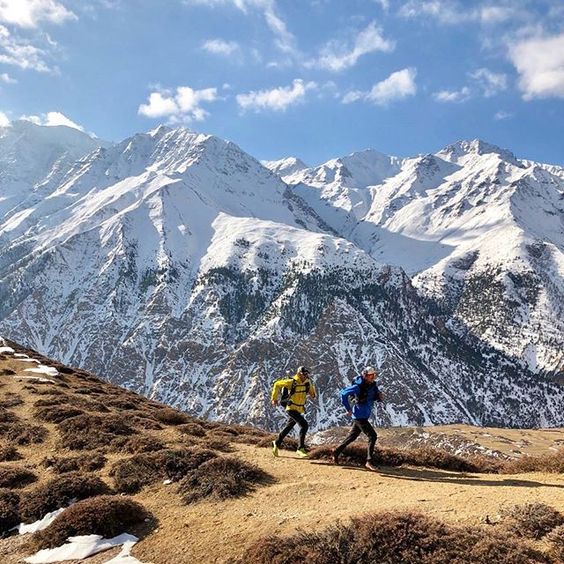
[Advendure]: Which parts of your equipment proved to be the most valuable ("MVE"), during this difficult mission?
[Ryno Griesel]: Our Salomon Shoes (I used the Salomon Sense Rides) and Salomon Down Jackets.
[Ryan Sandes]: For me, our down jacket was really useful just all round, to be able to sleep in and use it when you’re cold. Also my custom shoes were really helpful because I have wide feet so they really protected my feet and stopped me from getting any blisters. Obviously feet are really crucial and I had to look after them in a terrain like that. Also in most valuable equipment I would add GPS which is really important on a project like this.
[Advendure]: How did you manage to minimize the equipment you carried with you on a daily basis?
[Ryno Griesel]: We custom selected equipment based on the area of risk were going through. We typically carried more warm gear in the West (including Ice Axes and climbing rope in the Dolpha area) – we did not carry much food and relied on the locals for food, which ended up a tricky challenge in the end.
[Ryan Sandes]: We had a number of discussions and debates about minimizing the equipment as much as possible. We had three drop-bags along the way so we could pick up and drop equipment, but we actually mainly stuck to the same equipment. We just figured out what was the most important, and also to be able to take the bare essentials, so if something went wrong you would be ok, but at the same time you didn’t want to take too much gear.
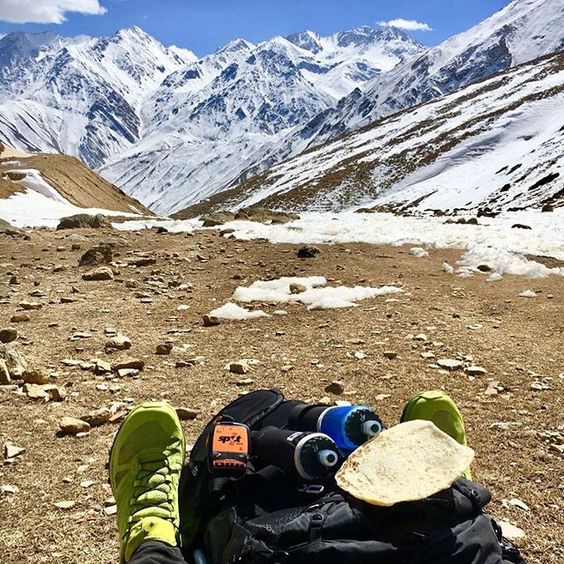
[Advendure]: Did you find that certain things you had not taken into account initially, but found along the way, such as open homes or packaged foods (snickers bars, coke, biscuits) that you can find in any neighbourhood supermarket, were life-savers?
[Ryno Griesel]: We were very impressed with and grateful for the hospitality of the locals, especially in the West, where there were no official Tea-houses, who would let us into their houses, and literally climb out of their beds
[Ryan Sandes]: Definitely in the west and in the Dolpha region, there were a lot less supplies and shops so food is a bit scarce at times, but there were some tea-houses with little shops on the side, where you were able to get snickers bars, coke, biscuits etc. and I enjoyed the Red Bulls for the night stretches, just to keep going. Those were really helpful, so we looked forward to the shops.

[Advendure]: Did you manage to adhere to a daily routine during your crossing, or was your schedule trashed after the first few days in isolated areas, giving way to the real adventure, which never sticks to a schedule?
[Ryno Griesel]: We never got into, or planned to have a daily routine. We decided, from the beginning not to have planned stops, or a scheduled itinerary, but rather listen to our bodies and adjust accordingly.
[Ryan Sandes]: We never had a very structured schedule, we had daily goals to achieve but because of the terrain and the nature of a project like this, you need to be flexible, so we adjusted that accordingly as we went along.
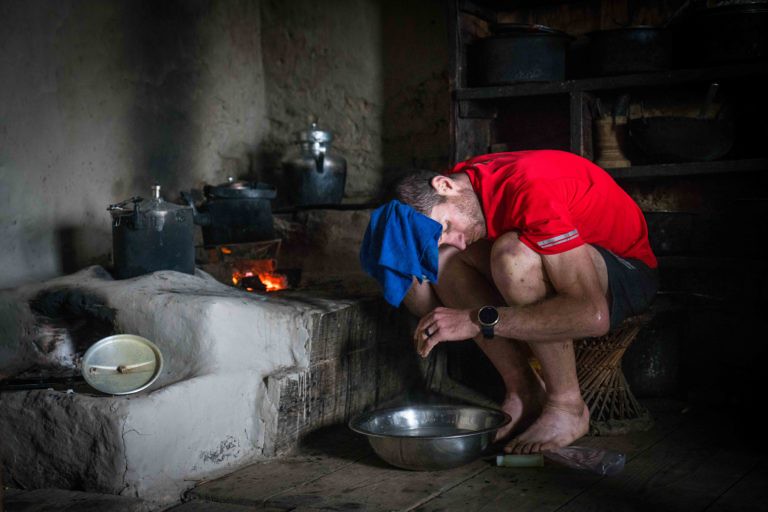
[Advendure]: Do you think that your poor diet, especially in the west, had a catalytic effect on the outcome of your adventure? How adequate is dhal-bat for someone who burns thousands of calories every day? How did you manage this difficult situation? Did you take food supplements (vitamins, minerals, etc.)?
[Ryno Griesel]: We did take daily vitamins. We found actually, that the Dahl and Rottis in the West, although more difficult to get hold of, and naturally we had to carry more when we did get hold of it – served us better – energy wise, than all the sugar stuff (cookies and chocolates) we ate in the West. In the last week, we ended up with upset stomachs, because of the mass amount of sugar we pumped into our stomachs.
[Ryan Sandes]: Even in the Dolpha region we managed to get a fair amount of food and we did take vitamin, mineral supplements; not that much, but the basics because we didn’t want to carry too much stuff. The dahl-bat was good - I think for me personally the big downfall was that we ate too many chocolates, just after twenty days I really felt my stomach had enough so that didn’t help, but dahl-bat was fairly decent, I don’t think it had a negative effect, and that’s all part of the adventure.
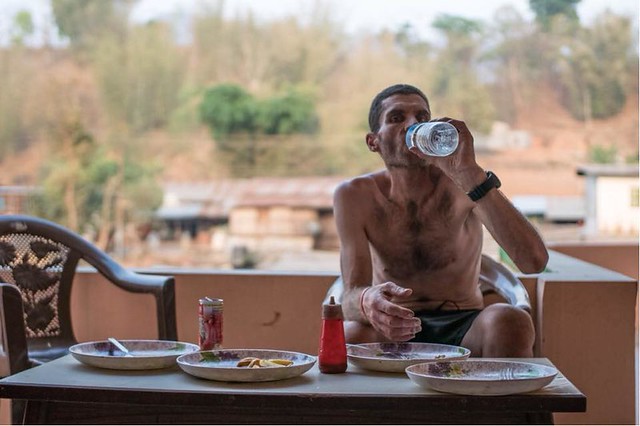
[Advendure]: How did the locals treat you? How much did they help? You have said that their hospitality saved you in Dolpa. Did the cultural differences between the Hindus in the east and the Buddhists in the west have an impact on the hospitality you received, or were people equally hospitable everywhere? Is there anything in particular that you will remember about the local people?
[Ryno Griesel]: The locals were super helpful through-out the country, although we could very seldom understand each other. We will forever be grateful for how some locals would literally climb out of their personal beds late at night for us to sleep in their beds. In the Dolpha area, we got shelter at a Monastery and at another occasion from a Monk. Both instances were life-savers from very dangerous situations in exposed extreme weather.
[Ryan Sandes]: As I mentioned before the highlight was the locals who were absolutely phenomenal. Even if we knocked their door at ten o’ clock at night they still opened their door to complete strangers and took care of us, made us food etc. The Buddhists in the west were a lot more relaxed and humble, whereas in the east we encountered a problem being chased by some drug guys. They seemed a little bit more aggressive but generally the people in Nepal were the highlight of our adventure.
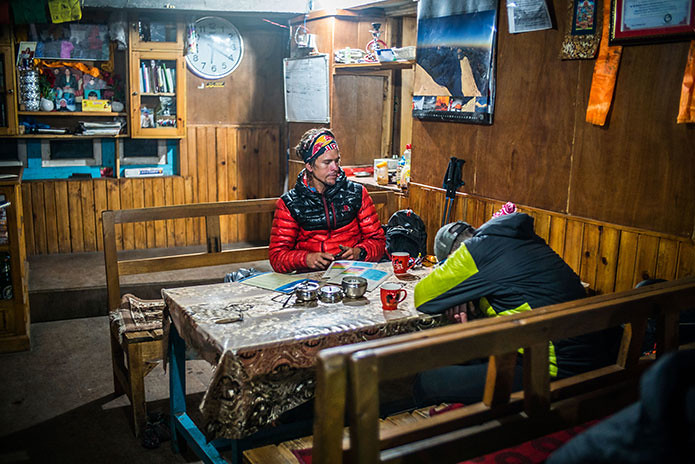
[Advendure]: You managed exhausting efforts and encountered many dangers in order to complete the GHT. What is it that attracts you to FKTs? What is it that makes them different from a conventional race, and therefore such a challenge?
[Ryno Griesel]: The planning and preparation of large scale FKT projects really appeal to us. The fact that you are mostly self-reliant and also left to creatively decide how to approach the challenge at our own timing is appealing.
[Ryan Sandes]: For me, I just see it like a big adventure and by trying to set the fastest known time you’re almost amplifying that experience as you’re trying to go as fast as possible and I think it adds a whole new dimension; but at the end of the day, looking back, the most important thing was the adventure and the whole experience we got out of it. The FKT is secondary, obviously I’m proud of it, but it’s not the be all and end all for me. I was able to experience 25 days of crossing Nepal with Ryno and having an amazing experience. Because an FKT is so much more wild, unplanned and unpredictable, I think that makes it so much more exciting than a race, a race can be very structured and planned at times.
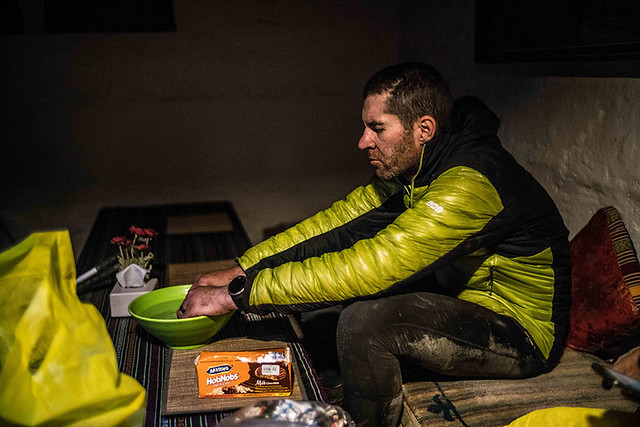
[Advendure]: How much do two people bond during and after such an experience? Does it depend on how compatible they are, or on how necessity brings them close together during such a great adventure?
[Ryno Griesel]: Facing real life challenges during such an extended time does test a friendship, but we believe through mutual respect, that our friendship will come out of this epic adventure ever-stronger.
[Ryan Sandes]: Definitely Ryno and I bonded a lot and we obviously experienced a number of highs and low, like Ryno getting frostbite, being chased by the drug guys kind of reinforced our bond after a project like this.
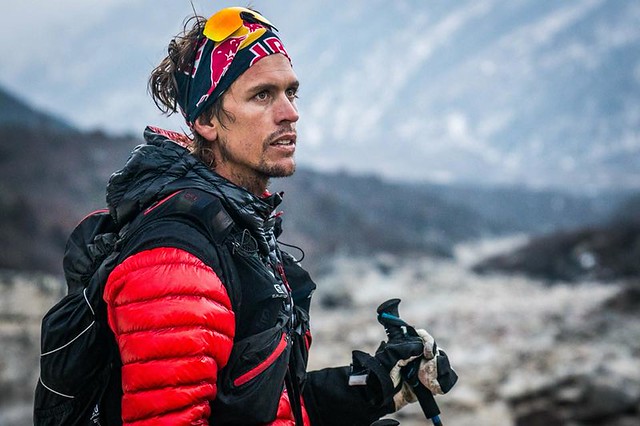
[Advendure]: Your attempt was widely publicized thanks to the support of your sponsors, and that was a happy event for all of us! Without degrading the secure of financial sustainability (or autonomy) that major sponsors provide to these attempts, does the fact that the attempts are brought into the limelight (as was the case of the GHT here) have a negative impact on the reputation of FKTs, which are characterized by loneliness and isolation?
[Ryno Griesel]: I do not think so. By sharing our adventure, we get to inspire others to climb their “own Everest” – which, according to us, is what it is all about!
[Ryan Sandes]: I’m really grateful that Red Bull documented the project. Ryno and myself were going do it regardless, but it was amazing to have the support of Red Bull, Salomon etc. I don’t think bringing projects like this into the limelight has a negative effect. For me it’s important to share our experiences, I really want people to live the whole experience with us and I think we achieved this, and hopefully we inspired people to go out and chase their dreams. I don’t think it has a negative effect on the FKT.
[Advendure]: More and more is being written, more and more discussions are taking place and more and more publicity is being given, to the future of ultra-running, thanks to KFTs. Do you think this is an authentic evolution of ultra-trails, or just a new marketing trick in a new field?
[Ryno Griesel]: I do believe it adds an alternative for Ultra Runners to “mix it up” – to extend their running careers, and to enjoy it more - but I do not believe the one will ever replace the other.
[Ryan Sandes]: I think FKT’s are really gaining in popularity and as I mentioned, I think a lot of people are turning to them because they are seeking more adventure, as races have become more predictable but I guess the majority of people always do races because you don’t have to do too much planning while in an FKT you have to do a lot of planning. If you look at the mountain planning Ryno and I did for the GHT, Ryno spent over 350 hours alone just on maps etc. so it takes up a huge amount of time and not everyone has that time, but I definitely think they (FKTs) are gaining popularity.

[Advendure]: Do you think that, under the latest global circumstances and considering that ultra-endurance effectively coincides with adventure, FKTs could be the next step in ultra-trail races, given that we are already seeing more and more, and increasingly popular, multi-day non-stop races?
[Ryno Griesel]: See above.
[Ryan Sandes]: I think people just want to step out of their comfort zone and try something different.
[Advendure]: At the end of all of these concerns about the details of the FKT on the GHT, what is more important for you: the athletic dimension or the emotional one? Had the adventurer's sentiment already overcome the athlete's logic as you arrived at Pashupatinagar after 25 days of constant effort? Are KFTs, after all, more of a mental experience than a great physical challenge?
[Ryno Griesel]: I do think it is a combination of both. However the beauty that originally attracts me to FKT’s are that they are not super regulated or politically driven or owned. I merely enjoyed running across Nepal with a best friend, and will not get into the details of the debate afterwards. I will rather positively focus on the next project.

[Advendure]: What did you take away from the culture and spirit of the people with whom you spent a month in the outposts of Nepal?
[Ryno Griesel]: Whenever possible – always be kind to those around you – you do not always understand the journey that they are on.
[Ryan Sandes]: The culture and the spirit of Nepal will always live with me it was an absolutely amazing experience and I would love to go back and take my family with me, my son Max, I believe it’s a phenomenal country and majestic. When you go to Nepal, I guess you leave Nepal but Nepal never leaves you, there will always be a part of Nepal in my soul.
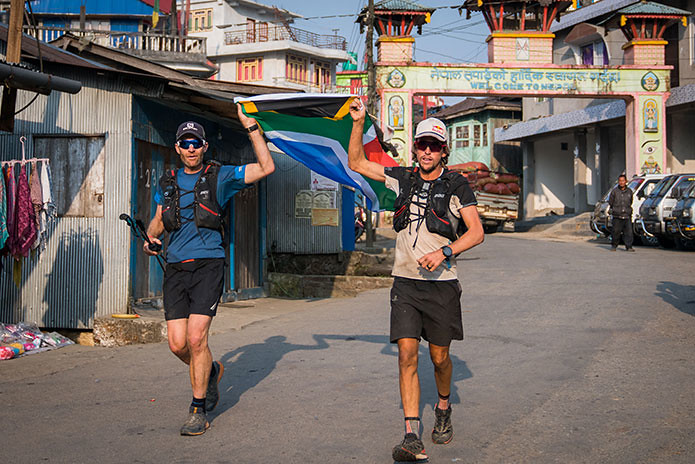
[Advendure]: With the valuable experience you have gained, what would you tell anyone attempting a fastest known time on the GHT in the future?
[Ryno Griesel]: Do not wait for the RIGHT time! There are always a 1000 reasons NOT to do something. Just jump in – it is an adventure anyway – you cannot control all the variables.
[Ryan Sandes]: What I would tell other people attempting the GHT; I guess it’s really important to do your homework and know exactly what you’re doing, and at the same time just soak it up and absorb it and really enjoy it, I guess at times you have to focus on just trying to cover ground every day, but it is important to remember why you’re doing it and how awesome and epic Nepal is. Definitely one piece of advice would be to make know which routes you’re going take and have a basic plan. You obviously won’t stick to it but just have some kind of structure.
Lazaros Rigos
Photo copyright: Dean Leslie (Wandering Fever)
Translation: Sofia Vlavianou - Transcript:Faidra Rigou
Γεννήθηκε στην Τήνο το 1961 και ζει στο Λιτόχωρο του Ολύμπου από το 2008. Ίδρυσε το Adventure Zone το 2001, μετά από σκέψεις για δημιουργία ενός ελληνικού portal για τα σπορ περιπέτειας. Δημιούργησε αγώνες ορεινού τρεξίματος, όπως Olympus Marathon (2004), Virgin Forest Trail (2007), Χειμωνιάτικος Ενιπέας (2006), Rodopi Ultra Trail (2009), Olympus Mythical Trail (2012). Στο ενεργητικό του αρκετές συμμετοχές σε αγώνες, όπως και μικρές αποστολές ultra διασχίσεων στην Ελλάδα και το εξωτερικό
www.advendure.com